Over the past month as tensions have mounted between the United States and Russia, one thing has stood out in my mind. I conducted more than 20 arms control inspections across the former Soviet Union, Central Asia, and Europe, working alongside NATO partner military members as well as members from Belarus, Russia, Ukraine, Georgia, Azerbaijan, Armenia, Turkmenistan, and Kazakhstan. At the conclusion of all those missions, there was always a dinner between the two teams, usually with a spread fit for a king and plenty of toasts (the people of the former Soviet states love to make toasts, and they are masters of putting together words for such events; we had to train for this practice, both in building up our alcohol tolerance, but also in order to pronounce our own toasts, as one side will make a toast, then the next, beginning with the highest ranking and proceeding to the lowest ranking). The first toast would usually be to the conclusion of the mission, and in good Soviet fashion, the second would be announced with a quick statement of “between the first and second, a bullet should not pass”. The third, depending on the company, would either be to the fallen or to women. And eventually, before the night was done, a toast would be made that those collected at the table should never meet one another on opposite sides of the battlefield. Often times, this toast would be preceded by words of how there is a brotherhood of military men. No matter what country we serve, we have in common that we have all taken on the duty to serve the people of our country. That we have put aside our own lives in order to answer the call of service, and that takes a special kind of person – that no matter what uniform or flag we wear, we are all cut from the same cloth, and therefore are a part of this brotherhood. And that is what comes to mind as our two nations stand on the precipice of war – all of those toasts done that we might not end up on opposite sides of the battlefield.
As I begin this article, I want to make one thing clear – the purpose of this article is not to scare anyone or fear monger – I’ll leave that to the mainstream media which has been doing plenty of it over the past couple of weeks. Rather, using my experience, skills, and perspective, I want to first show the reader what is going on currently in reporting in the West and then paint a picture of what I foresee coming. Not predictions – but possible actions based on where we are now, what is going on, and my own thoughts on where this is all heading. Though the latest celebrity or presidential campaign gossip might dominate the talk across “news” sources, the fact is that the United States and Russia are probably closer to war now than they have ever been in the past. If that doesn’t scare you, you probably have no idea of what war between the US and Russia could possibly mean, or the fact that it will not just be between the two of us but will likely lead to World War III which will have profound and devastating effects on the world.
Reset or Overload?
Remember back to March, 2009, when Hillary Clinton, then Secretary of State, brought out the red “reset” button to be symbolic of the reset in relations that the Obama administration was pursuing with Russia? I remember seeing this as it played out, I was working at the time as an interpreter for those arms control missions. We were watching this in our daily language training and when they showed the button, our native-Russian instructor paused it and his jaw dropped. We all immediately recognized that the button didn’t say “reset” in Russian, but “overload”. It was played off as a translation mistake and over the next few months, any time we interfaced with our Russian speaking partners, they would poke fun at those of us that were interpreters.
However, hindsight being 20/20, is it not even more symbolic of the current situation and the succession of events from that point to now that the error in translation would prove to be more true than the supposed intent behind it? Certainly, the case could be made that this was not an error in translation but rather a tipping of the hand by global elites of what the future would hold. Though many believe that the administration of Vladimir Putin is not globalist, could it be that this entire scenario was manufactured in order to set the global chessboard for the greatest game ever to be played on the unsuspecting people of this planet? Even if Putin himself is anti-globalist, that does not mean that Russia’s own shadow government isn’t. But more on shadow government and the true power behind the throne later. What should be remembered is from that point to now, there has been a steady surge of tension between the United States and Russia that is very quickly reaching the tipping point, and that this very symbolic “overload” button pushing was perhaps the revelation of the beginning of this period. From that moment, the US and Russia have had disagreements over arms control and particularly, nuclear arms agreements; Iran and its nuclear program; the Ukraine crisis and the annexation of Crimea; tit-for-tat spying and arrests; criticism of Russian human rights policies and gay rights policies; trade disputes; sanctions; expulsion of various NGOs and USAID from Russia; and the Syrian civil war. Let’s take a few of these points and look at them more closely.
Ukraine
The events that would lead to civil war in Ukraine began as protests over the changing policy of then-President Yanukovych to move away from the preparation of implementation of agreements that would bring the country closer to integration into the European Union and NATO. Yanukovych had been a candidate to the presidency before, back in 2004, and enjoyed a great deal of support from the southern and eastern parts of Ukraine. These parts of Ukraine now figure prominently in the crisis that is still ongoing there despite limited reporting in the West. This is because those parts of the country are made up primarily of ethnically Russian people that have ties back to their families in Russia and have a great deal of national pride. This is one of the fallacies of the reporting that has happened on this crisis in the West, and the United States in particular, that the Ukrainian and Russian people are essentially the same. While they are both Slavic, the Ukrainians have just as much Polish ancestry as Russian, and many in the western parts of the country still have familial ties back to Poland, just as those in the eastern parts still have those ties back to Russia. Ukraine has rarely enjoyed any type of independence throughout its history, being either part of Polish lands or Russian lands. And so there is a underlying issue here of loyalty to either Catholic and Western-leaning Poland or Orthodox Russia.
Yanukovych and the other candidate, Yuschenko, each came in with just over 39 percent of the vote nationally. According to Ukrainian law, the candidate can only win by garnering 50 percent of the vote or more. A second round of voting was held and Yanukovych was initially declared the winner during this round of voting. However, international organizations and foreign governments came forward with allegations of electoral fraud and the Ukrainian Supreme Court ultimately ruled for another round of voting, in which Yuschenko was declared the winner.
Yanukovych’s popularity in the eastern and southern parts of the country is because of his campaigning to seek closer ties to Russia and not pursue closer ties to NATO and the EU. Yuschenko, on the other hand, campaigned on just the opposite, which is why he carried the western parts of the country. During Yuschenko’s presidency, Ukraine edged closer to joining NATO, which was seen as controversial within Ukraine, with the dividing lines of approval coming along those ethnic lines. Those in the east and south considered it further Western expansionism and interference within the internal politics of Ukraine.
In 2009 (note the year), Yanukovych announced that he would again pursue the presidency. During the tenure of Yuschenko, Yanukovych had been working to build further support in the south and east and had formed political alliance with the Russian political party, United Russia, the political party of Vladimir Putin and Dmitry Medvedev. Throughout the election campaign, Yanukovych was accused of campaign finance fraud and on 11 December, 2009, he requested his supporters gather on Independence Square in Kiev, in case of electoral fraud. He had a runoff against Yuliya Tymoshenko, the Western darling of the Orange Revolution, in which he won and she withdrew her dispute of the election.
Yanukovych announced that Ukraine would pursue a balanced policy between the West and Russia, recognizing the desire of those in the western parts of the country for integration into the West, while trying to balance that with a policy that also accommodated his base in the southern and eastern parts of Ukraine and trying to keep a good relationship with its neighbor to the east, Russia. Yanukovych took steps during his presidency which drew the ire of the West and international institutions, such as criticizing a 2004 constitutional amendment that weakened presidential power in appointing national ministers and domestic economic policy to raise the minimum wage and pensions across the country. This would result in the IMF cutting off its emergency lending program to Ukraine, as it complained that this went against the demand to cut domestic spending. However, having traveled repeatedly to Ukraine, I can tell you that most people there worked two and even three jobs, often 24 hour shifts between them, just to try and make it. It is the destitute poverty of the working poor that enables groups with political agendas to hire protesters, mostly pensioners and students. I witnessed these protesters firsthand during military exercises in Ukraine, who despite waving banners demanding NATO forces to get out of Ukraine, they would talk to us and tell us that they actually loved the West and were being paid to protest (around $30 a day).
However, in November, 2013, Yanukovych would suddenly reverse course for Ukraine, shelving the agreements for integration into the EU and drawing closer to Russia. One thing to bear in mind here is that Yanukovych likely was observing the ongoing crisis in Greece and the EU’s demands placed over the Greek government. In addition, his own domestic economic policies had already met with disdain from the IMF and Russia was offering financial aid without demands on domestic policies (whether or not you believe this aid was with no strings attached, is up to you). However, protests broke out in Kiev which resulted in a heavy-handed response from the police forces. This sparked more protests which rapidly grew in intensity and violence. On 21 February, 2014, Yanukovych left in exile to Russia with Russian aid to escape (which they insist was to preserve the life of a democratically elected leader). The next day, the Ukrainian parliament voted to remove him from the post of president.
On 18 March, 2014, Crimea was annexed by the Russian Federation after a referendum vote. Now, the question of Crimea is an interesting one, as Crimea was initially annexed by the Russian Empire after about 300 years of rule by the Crimean Khanate, a vassal state of the Ottoman Empire and one of the last remaining relics of the Mongol horde (it should be noted that Moscow was raided and sacked by the Crimean Tatars in 1571, and they burned almost everything in the city except the Kremlin; in addition, the Crimean Tatars maintained slave trade with the Ottoman Empire and between about 1500-1700 exported an estimated 2 million slaves from Russia and Ukraine – for comparison, between 1525 and 1866, an estimated 388,000 slaves were brought to North America via the Atlantic Slave Trade). It was not until 1954, under Nikita Krushchev, that Crimea would become part of the Ukrainian Soviet Socialist Republic. Most believe today that this was a symbolic gesture to the people of Ukraine. When the Soviet Union broke up, Crimea went with Ukraine, despite the fact that Russia maintained a large military presence in the post city of Sevastopol. Having been to Crimea several times and asked about the special relationship, it should also be noted that Crimea in Ukraine was an autonomous republic, and with the presence of both Russian and Ukrainian military, there was a special accommodation allowing young men of military age entering the draft to decide which military to join. With pay and benefits in the Russian military being better, often times the young men would decide to join the Russian Navy, which also enabled them to gain Russian citizenship. The Russian military was very popular in Crimea, due to the economic benefit of having them in Sevastopol, and many of the people on the street that I spoke to there did in fact consider themselves Russians. Does that mean there wasn’t tampering with the referendum votes? Absolutely not. But the whole story was never told by Western media.
All of that being said, in my opinion, it is clear that the Ukraine crisis and civil war is less about the will of the Ukrainian people and it was the first in a series of proxy events between the United States and Russia, with both sides interfering in the internal politics. I believe that the Orange Revolution was initiated by the US, and after witnessing the power the US was gaining in a country that bordered it and was historically associated and sometimes even territory of Russia, Russia then also stepped up its involvement. The United States, I believe, sees this as a diversionary movement on the grand chessboard to tie up Russian forces to at least secure the border, and the risk of spillover demands this, despite repeated claims of Russian military buildups in the area being signs of impending invasion. Are Russian special forces participating in the conflict on the ground in Eastern Ukraine? I do not doubt that, but it should also be pointed out the actions of US special forces around the globe in conflicts that are not even on our border. This is not indictment or defense of either side, but I think that Russia has just as much right to defend its national interests as the US, and the primary interest the US and the West has in Ukraine is in its relationship with Russia and the national security risk to Russia of war in/with Ukraine.
The Baltics / Poland
For many years, the West and Western media have long talked about the desire of the Putin administration to rebuild the Soviet Union and in particular, to reclaim the Baltic States of Estonia, Latvia, and Lithuania, and then to terrorize Poland. The Baltic States and Poland are some of the more aggressively anti-Russian former Soviet republics, largely due to the way in which they were integrated into the Soviet Union and the Warsaw Pact and the fallout from World War II, in which Poland was basically a sacrificial lamb devoured by treaty by Nazi Germany and the Soviet Union. While largely unreported in the West, once the Soviet Union fell and the Baltic States gained their independence, there was large scale violence inflicted upon those of Russian ethnicity in the region and the ethnic Russian minority in these countries still are subject to harassment and a second-class citizen status, according to many pro-Russian groups there. The Baltic States have also been subjected to cyber-attacks from non-state Russian hackers during times of intense tension, and this resulted in the now infamous 2007 wave of cyber-attacks on Estonia. Some have suggested that cyber-attacks from Russian hackers have also caused blackouts in the countries.
To make matters even worse, Kaliningrad, a region of Russia that is now an exclave after the disintegration of the Soviet Union, is located between Lithuania and Poland. The only port that Russia has on the Baltic Sea that is free from ice year round, the former Konigsberg is one of the most heavily militarized regions of Europe, Russia taking special care to defend this strategic asset. When the US announced that its missile defense system would be located in Poland, Russia responded that without a doubt it would locate missiles in Kaliningrad as a defensive move against this system, which the US maintains is not aimed at defense against a Russian launch (if it were aimed to defend against Russian missiles, it would be a violation of the 1987 Intermediate Range Nuclear Forces Treaty).
The scars of the past between Russia, Poland, and the Baltic States are apparent and clear for everyone to see. Though sometimes bordering on the paranoid, Poland and the Baltic States have every right not to trust Russia. Historically, Poland has not fared well when West goes against East, as it sits on the only easily traversable plain between the two, as south of Poland the terrain becomes more mountainous between the West and Russia. This makes Poland also a strategic asset for ground operations in case of war.
For years, the West and Western media has played to these fears on the part of the Baltic States and Poland of a growing Russia threat in order to pull them further toward the West and also to place NATO troops and bases within these countries. This has only served to continue to worry Russia about its own national security and play to their fear of a growing NATO threat on its doorstep, which has led to military buildup along the borders and in Kaliningrad, something that both sides understood was bad during the arms control discussions throughout the 70s and 80s and in particular in relation to conventional arms buildups within Germany leading to increased tensions. However, with arms control now out of favor with both sides, it seems that without much attention being devoted to covering these buildups, a new arms race and Cold War have ignited with the Baltic Sea region being the center of tension.
Syria
The Middle East has long been a source of friction between the various states that make it up, and also it has been the battleground of proxy wars throughout most of the 20th and 21stcenturies. With the War on Terror in full swing, as well as the Iraq War, in 2004, George Bush announced “The Greater Middle East Initiative”. It was aimed at spreading democracy and in particular, the American democratic model into the Islamic world in order to counter radical Islamic terrorism. While many things could be said about the fallacy of this strategy, the primary thing to remember here is that this was likely the signaling of the beginning of covert operations by American assets to bring about regime change in the Middle East of those nations that were hostile to US policy (which runs hand in hand with Saudi policy when it comes to the Middle East). These operations take time to come to fruition, exchanging favors, building networks, moving assets and finances into place. However, I am of the opinion that what we saw as the Arab Spring beginning in December, 2010, in Tunisia and spreading throughout the Arab World well into 2012, was the culmination of this work by US assets. However, with the majority of US troops withdrawing from Iraq by 2011, this regime change coupled with a power vacuum on the ground was a fertile field for the growth of exactly what this initiative was supposed to be countering. Whether faulty policy or specifically constructed to have just this effect, by 2014 we were witnessing the rise of the Islamic State in Syria and Iraq.
Syria was clearly targeted by the Bush initiative, being closely associated with the “Axis of Evil” and its defiance of Saudi power in the region. The Syrian civil war began in 2011 and the fighting allowed multiple radical jihadist groups to become entrenched in the country. The US began funding rebel groups (as this was part of the Bush initiative) and by 2015, at the request of the Syrian government, Russian forces were taking part in fighting. This set the stage for the Syrian proxy war between the US and Russia, which has increased tensions between the two significantly. With both US and Russian air assets operating in the country and Russian military support to government forces, it risks further escalation. Especially after the US bombed Syrian government forces in support of rebel assets on the ground. There is much more that could be said on the state of affairs in Syria and the escalating tensions between the US and Russia over Syria, but let’s cover all of that in this next section.
Putin, Obama, and Cold War 2.0 Going Hot
Now that we have looked at some of the trouble spots and reasons behind the escalation of tensions behind Cold War 2.0, let’s look at what is going on now and the beating of the drums of war by Western media. In the past week, we have seen reporting in the Western press about Russian hacking and influence of US elections, a Putin ally telling the American people to vote for Trump or face nuclear war, a massive Russian civil defense exercise, the Russian government telling officials to bring their relatives that abroad back home, calls for extending sanctions on Russia, Russia moving missiles into Kaliningrad, and reporting on the CIA moving to launch a cyber-attack on Russia. Let’s take these one by one:
- The statement that the Russians are behind the hacks that have revealed information on the DNC and Hillary Clinton might or might not be true. NSA-whistleblower William Binney claims that the leak most likely came from within the US intelligence community itself. Regardless, the rhetoric about Russian hackers trying to influence the elections does not in any way invalidate the information that has been released, and is a ruse to deflect attention away from the actions of this criminal group and to the historical boogeyman of the Russians.
- The Putin ally that is quoted as saying this is Vladimir Zhironovskiy. The man is a total nutjob that is rolled out by the press from time to time when he makes famously radical statements. He is a Russian politician with some very devoted supporters, mostly those that are still holding out for the Communists to again take power in Russia. Just do an internet search on the guy…you will see some of the crazy things he has said in the past.
- The massive civil defense exercise is something of note just because of the size of the event. However, such events routinely take place throughout Russia, as the MChS, Russia’s equivalent of FEMA, actually does try to prepare people rather than whatever it is that FEMA does. But, the fact that they claim that 40 million people participated should be noted. I kind of blew this off in the beginning, but as more reporting as come out and substantiated some of the claims, it is significant that Russia is preparing for the defense of its people. I think it’s likely because it perceives the American threat as real.
- I don’t know how to read the reports of Russian government officials being told to bring their relatives that are abroad home. I don’t doubt it for reasons of security, or for the reason stated that it is about not appearing as a hypocrite, too. However, this is also reported as being from “sources” inside the Russian government, so it could be more fearmongering and clickbait.
- Anders Fogh Rasmussen, the former Secretary General of NATO wrote a piece in the Financial Times calling for an extension of the sanctions against Russia. In it, he continues the fearmongering of the media by pointing out media talking points on Russian aggression, while ignoring the obvious threats that NATO has made to Russian national security.
- Russia made good on its assertion that the missile defense shield in Poland would mean that it would move missiles into Kaliningrad as a defensive move against it. While the Russians state that they are there merely for an exercise, I don’t look for them to pull them out any time soon.
- The report on the CIA launching cyber-attacks is propaganda and misinformation. While I don’t doubt the US is preparing cyber-attacks for Russia, the CIA would not be the originator for the attacks and the only role they would play is if there was either a need for physical implant of the attack software or if they needed an asset to implant the software.
At this point, I realize that some might look at what I am writing and think that I am a Russia apologist or Putin fanboy. That is not the case. However, the Western media has over the past month waged a media campaign against the Russians and a fear mongering campaign against the American people that made the buildup to the Iraq War look like it was produced by Sesame Street. It ignores Western aggression and the role that the US has had in creating these proxy war environments and stoking the flames of war, while painting every move the Russians make as aggressive and running with false information to scare the American people.
The moves that I have seen the Russians make for the most part have been defensive. The movement of assets to the Mediterranean is defensive of the Black Sea fleet and its base in Latakia. The deployment of missiles to Kaliningrad was predicted by the Russians years ago and also is a defensive countermeasure to NATO forces moving through the Polish plain towards Russia. In Syria, they have responded by official request by a sovereign nation to aid its government in putting down rebellion by Islamic jihadist groups that have carried out genocide against the Christian minority and are subjecting whole regions to brutal rule that goes far beyond Sharia law.
On the other hand, the US government has levied accusations at the Russians that are not substantiated and within the diplomatic, economic, and political spheres are showing their hand for war against the Russians, while playing to the fears of its allies to move troops and assets into strategic areas. The Obama reset was from one where the US and Russia were on track to partnership to one of almost certain war with one another. Could you imagine if the Russians were putting out this disinformation, building missile defense shields in Mexico, and starting wars in Canada? And our ties to Canada are nothing when compared to their ties to Ukraine, historically, politically, and economically.
Now, much has been said over this past month, also, of the specter of nuclear war hanging over the US and Russia, and the world. Personally, I don’t doubt the use of nuclear weapons, especially by the Americans because far too many people in this country don’t really understand the destructive power, short and long term, of the use of nuclear weapons, and we, as a nation, have some kind of hubris when talking about using nuclear weapons that there would be no blowback for such an action. However, I think it is more likely that we would see primarily a conventional war fought between the US and Russia, which would quickly spiral to WWIII, but with limited pockets of tactical nuke usage and the use of nukes for their EMP power. I think that Russia would look to suck the US into conventional invasion of Russia and make the same mistake that Napoleon and Hitler did in overrunning their supply lines and then chewing them up. One aspect most people don’t consider in such a scenario is that for the most part, US forces have not had to operate in an area where they didn’t have air superiority since WWII. While we would have superiority from time to time in certain places, this would not be a constant. Most of our supply lines in the modern military run with air transport, and this would immediately impact our supply lines. Add to it that our military is built to be small and fast now, but the Russian terrain and lack of infrastructure would impact our ability to quickly move and would leave us susceptible to Russian heavy armor and close air support from rotary and fixed wing aircraft. While they don’t currently have the capability to fully project power globally, the Russians would be able to defend their territory quite well, I believe, and using submarine systems could launch EMP attacks along the East and West coasts. Even if the military and government were not fully impaired, assets would soon be tied up by the rioting and looting that would take place during such a scenario. And indeed, if China did enter the war on the side of the Russians (which I think it would pretty much come down to BRICS nations vs NATO), then they would have to capability to invade the US homeland, especially under the fog of war from the EMP strikes. Places I think you might see the use of actual tactical nuclear strikes might well be in Poland/Germany if limiting the scenario to the Russian / American theater.
As I stated in the beginning of this article, its intent is not to scare anyone. I will not tell you who you should or should not vote for in this coming election, because though I know it will likely frustrate some of the people I associate with, I don’t trust any of the major or third party candidates. Trump is problematic to me, not because of his comments or the media smears of him, but because I don’t feel like he understands the issues or world politics, and definitely doesn’t understand the role of the president as outlined by the Constitution. Hillary is a criminal. If you still don’t realize this, you likely aren’t intelligent enough to be voting for the president of this country. However, her comments during the last debate sealed my opinion that if elected, she would most definitely take us to war with Russia and kick off WWIII. Even if she is not elected and Donald Trump is, I believe the course has already been laid for war. The election will not change that. There are people within our government that are neither elected nor selected that have just as much power to bring us to the point of war as the president does. These are the shadow government. Though presidents, secretaries, and cabinet-level officials are often the ones to take the heat of the actions of these individuals, these people see the politicians come and go, brief them on what they want them to know, and it is often business as usual no matter who occupies the political positions. Of course, that is if we are not already at war with Russia before the elections or between the elections and when the next president is sworn in.
We stand at the precipice right now of fighting an existential conflict of our own design in the form of war with Russia and the following world war. We have not fought an enemy since WWII that presented an existential threat to our nation. During that war, even those that were not drafted and sent to the front lines had to sacrifice, through victory gardens, war bonds, food rations, and so on. While a false flag type event that struck at the very heart strings of America might bring the country together as it was following 9/11, I think that Americans today wouldn’t so easily buy in to it. A draft would be met with riots and protests, and I don’t see this current America being willing to give up the easily life to sacrifice for a war, nor do I see the industrial base of America, with so many assets located overseas, being willing to shift production from cell phones and the like to war industry. Whether you believe that this war is being designed for the downfall of America, or you believe that American hubris is such that we are ignoring the fact that this is an existential threat and believe we can run over Russia, you have to realize that the effects this war would have on our nation would be catastrophic not just from the war itself, but societally. We are not in position as a society, nor financially, for the kind of conflict that would come about during war with Russia.
In closing, and bearing that in mind, I would ask the readers of this article to please pray for peace between the US and Russia, for cooler heads to prevail or that those that are leading this madness would have their hearts changed.
This article appeared originally pon The Putlaw Patriot News website on October 16, 2016. https://outlawpatriotnews.wordpress.com/2016/10/16/standing-at-the-precipice-how-we-got-here-and-how-cold-war-2-0-will-play-out/

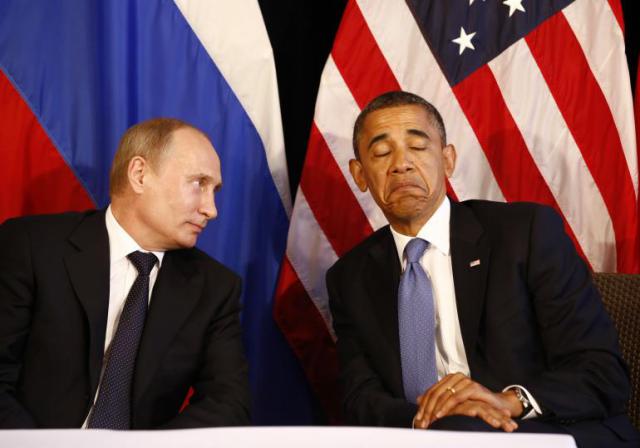
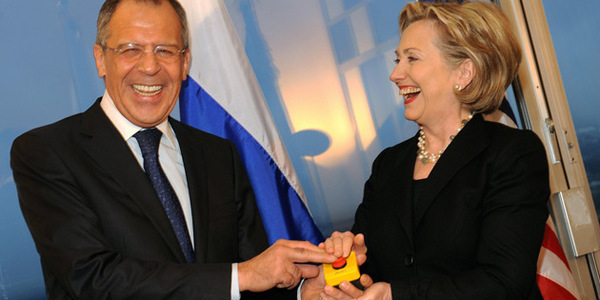
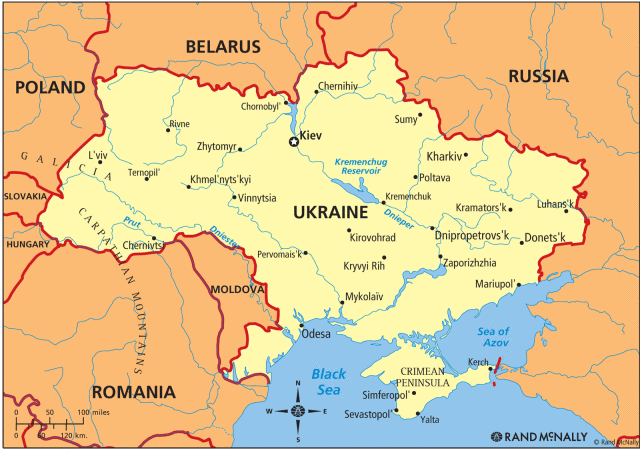
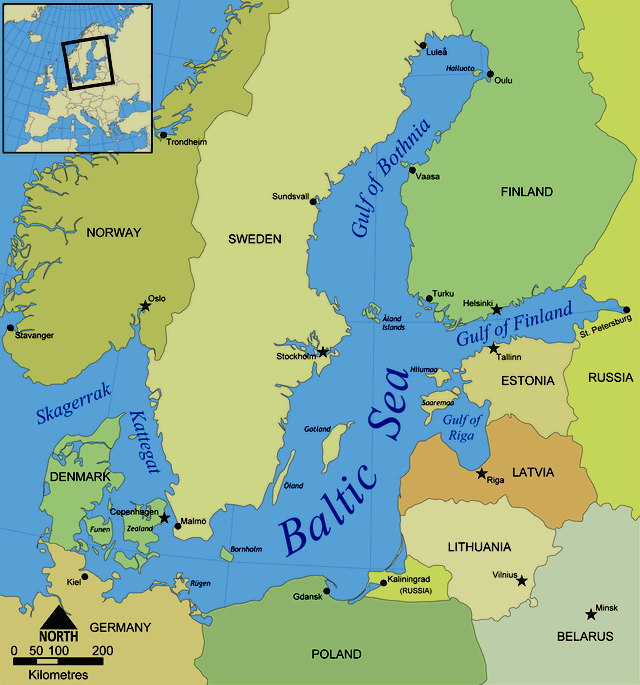
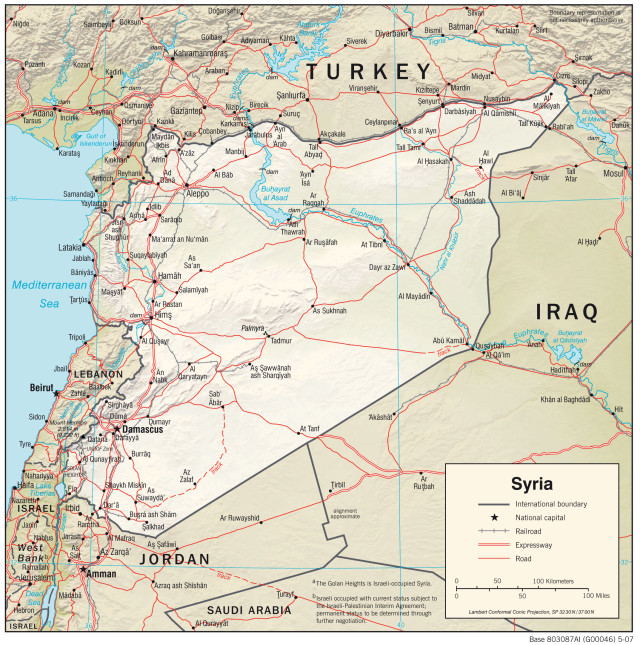
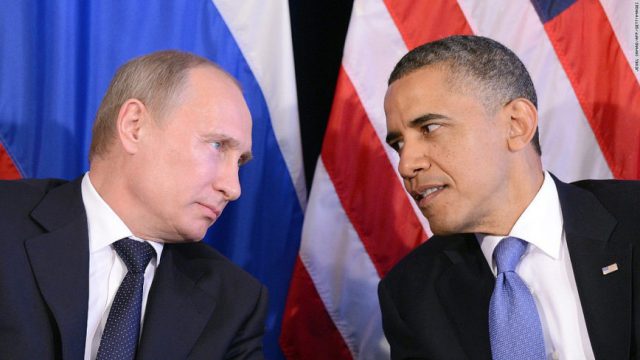
Thank for the support, Pastor Mike! 😉
Blessed Sgt. Tim to count you as a friend and co-laborer.